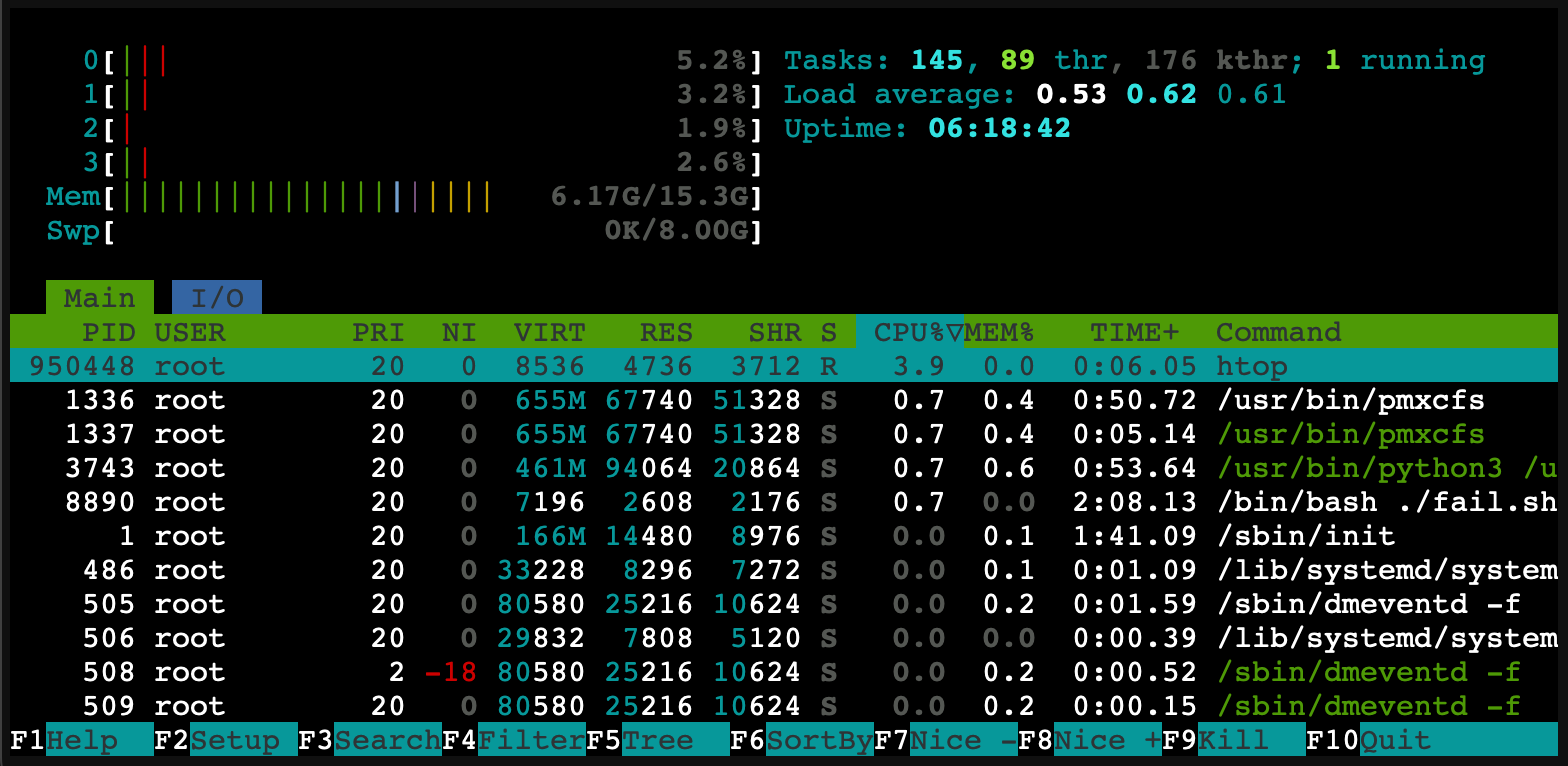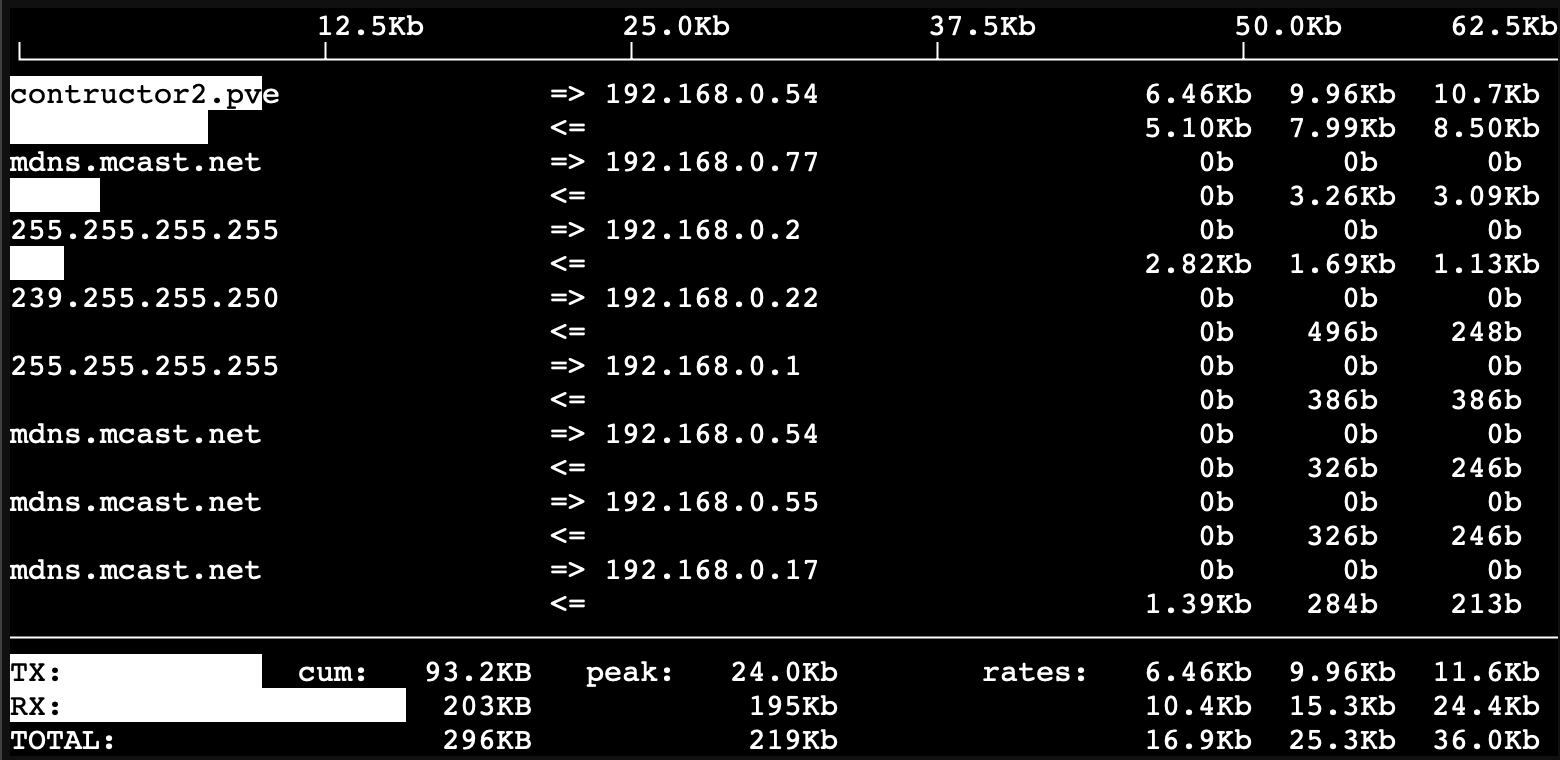Basic Settings
The Basic Settings category focuses on foundational configurations for your Proxmox VE installation, including installing essential utilities, adding repositories, managing packages, and keeping the system up to date.
Available Optimizations
This optimization installs a set of common system utilities that are useful for system administration and troubleshooting.
Why it's beneficial: Having these utilities pre-installed saves time when managing your Proxmox VE system. They provide essential tools for monitoring system performance, managing files, and troubleshooting issues, enhancing your ability to maintain and optimize your virtualization environment.
Utilities installed:
-
axel: A light command-line download accelerator
Example usage:
axel -n 10 http://example.com/largefile.zip -
curl: A tool for transferring data using various protocols
Example usage:
curl -O http://example.com/file.txt -
dialog: A tool for creating TUI interfaces
Example usage:
dialog --title "Hello" --msgbox "Hello, World!" 10 20
-
dnsutils: DNS utilities including dig and nslookup
Example usage:
dig example.comnslookup example.com -
dos2unix: Text file format converter
Example usage:
dos2unix file.txt -
gnupg-agent: GNU privacy guard - password agent
This runs in the background. To start it:
gpg-agent --daemon -
grc: Generic colouriser for everything
Example usage (colorize ping output):
grc ping example.com -
htop: An interactive process viewer
To start htop, simply type:
htop
-
btop: A resource monitor that shows usage and stats for processor, memory, disks, network and processes
To start btop, type:
btop
-
iftop: A tool to display bandwidth usage on an interface
To start iftop (requires root):
sudo iftop
-
iotop: A tool to display I/O usage by processes
To start iotop (requires root):
sudo iotop
-
iperf3: A tool for active measurements of the maximum achievable bandwidth on IP networks
Example usage (server mode):
iperf3 -sExample usage (client mode):
iperf3 -c server_ip -
ipset: A tool to manage IP sets in the Linux kernel
Example usage (create a new set):
ipset create myset hash:ip -
iptraf-ng: An interactive colorful IP LAN monitor
To start iptraf-ng:
sudo iptraf-ng
-
mlocate: A tool to find files by name quickly
Example usage:
locate filename -
msr-tools: Tools for accessing CPU model-specific registers
Example usage (read MSR):
sudo rdmsr 0x1a0 -
nano: A small, friendly text editor
To open a file with nano:
nano filename.txt
-
net-tools: A collection of programs that form the base set of the NET-3 networking distribution for the Linux operating system
Example usage (show network interfaces):
ifconfig -
omping: An open multicast ping tool
Example usage:
omping 239.255.255.250 -
software-properties-common: Provides an abstraction of the used apt repositories
This package is typically used by other tools and doesn't have a direct command-line interface.
-
sshpass: A tool for non-interactive ssh password authentication
Example usage:
sshpass -p 'password' ssh user@hostname -
tmux: A terminal multiplexer
To start a new tmux session:
tmux
-
unzip: A tool for extracting and viewing files in .zip archives
Example usage:
unzip file.zip -
vim and vim-nox: A highly configurable text editor
To open a file with vim:
vim filename.txt
-
wget: A utility for non-interactive download of files from the Web
Example usage:
wget http://example.com/file.zip -
whois: A client for the whois directory service
Example usage:
whois example.com -
zip: A compression and file packaging utility
Example usage:
zip archive.zip file1 file2 file3 -
libguestfs-tools: A set of tools for accessing and modifying virtual machine disk images
Example usage (list files in a VM disk image):
guestfish -a disk.img -m /dev/sda1 ls /
All these utilities are installed automatically when you run this command:
This optimization configures APT to skip downloading additional language packages, which can save disk space and speed up package operations.
Why it's beneficial: By skipping unnecessary language packages, you can reduce disk usage and improve the speed of package management operations. This is particularly useful in server environments where multiple language support is often not required.
This adjustment automates the following command:
This optimization configures the system to automatically synchronize its time, ensuring accurate timekeeping.
Why it's beneficial: Accurate timekeeping is crucial for many system operations, log consistency, and proper functioning of time-sensitive applications. Automatic synchronization ensures your Proxmox VE system maintains the correct time without manual intervention.
This adjustment automates the following command:
This optimization updates the system's package lists, upgrades installed packages, and configures Proxmox repositories. It also includes additional steps to properly set up Debian repositories and disable certain warnings.
Why it's beneficial: Keeping your system up-to-date is essential for security, stability, and performance. This optimization ensures you have the latest patches and features, while also configuring the correct repositories for Proxmox VE, enabling access to necessary updates and tools.
Repository changes:
- Disabled: Enterprise Proxmox repository (pve-enterprise.list) - This repository is for users with a paid subscription.
- Disabled: Enterprise Proxmox Ceph repository (ceph.list) - This repository is for enterprise Ceph storage solutions.
- Added: Free public Proxmox repository (pve-public-repo.list) - This provides access to free Proxmox VE updates and packages.
- Added: Proxmox testing repository (pve-testing-repo.list) - This repository contains the latest, potentially unstable updates for testing purposes.
- Configured: Main Debian repositories - These provide access to the core Debian packages and security updates.
This adjustment automates the following command:
Automatic Application
All of these optimizations are automatically applied when selected in the Basic Settings section. This automation ensures that these beneficial settings are applied consistently and correctly, saving time and reducing the potential for human error during manual configuration.